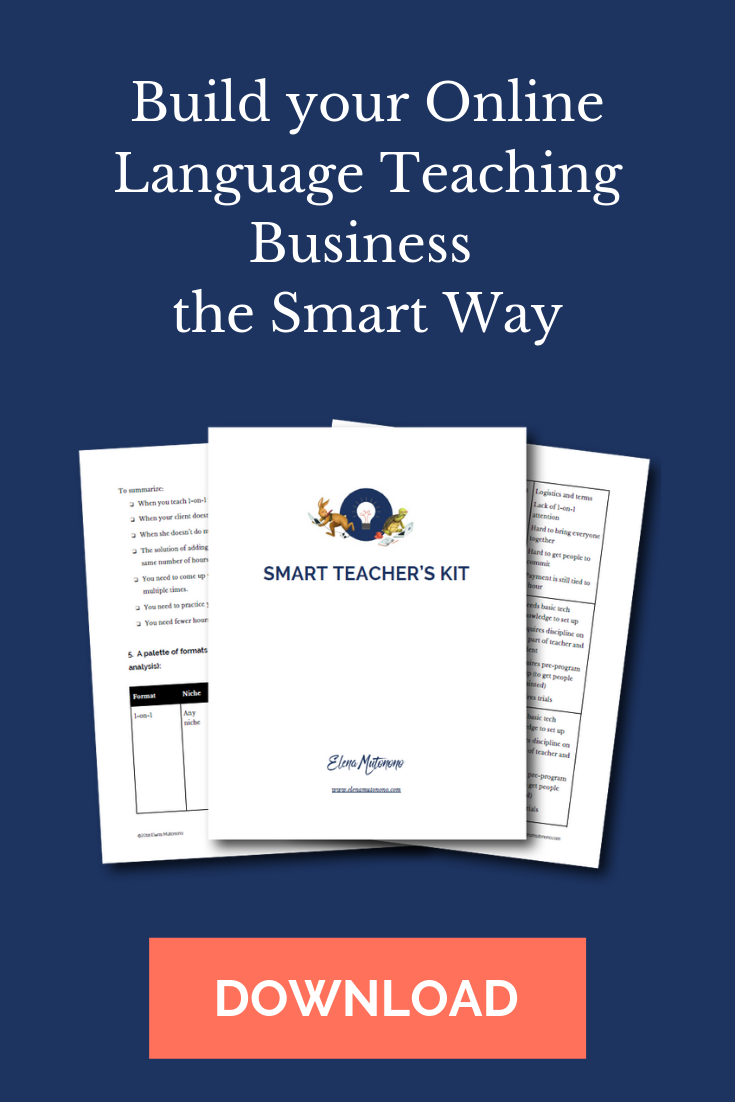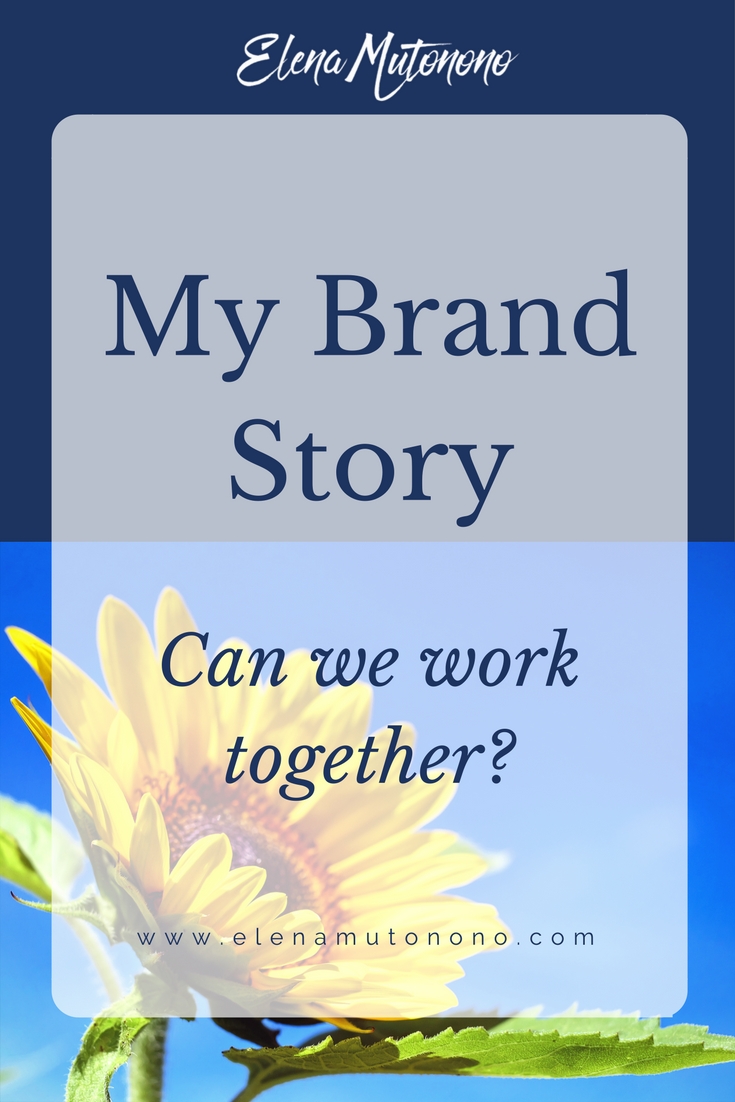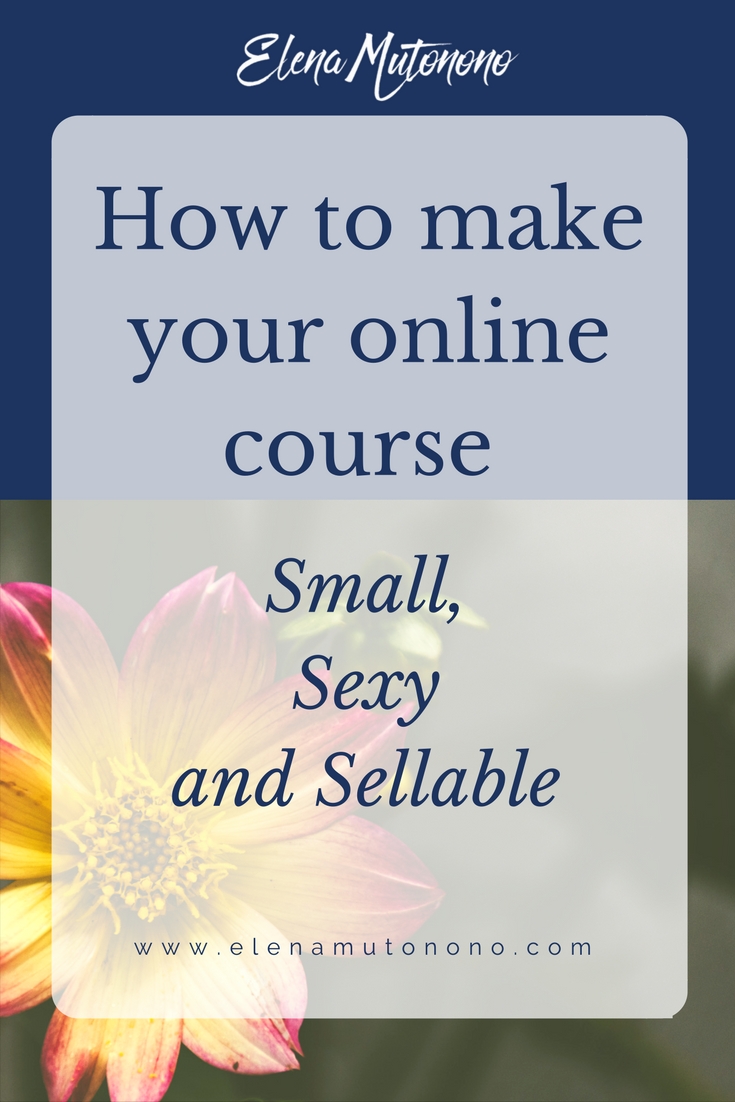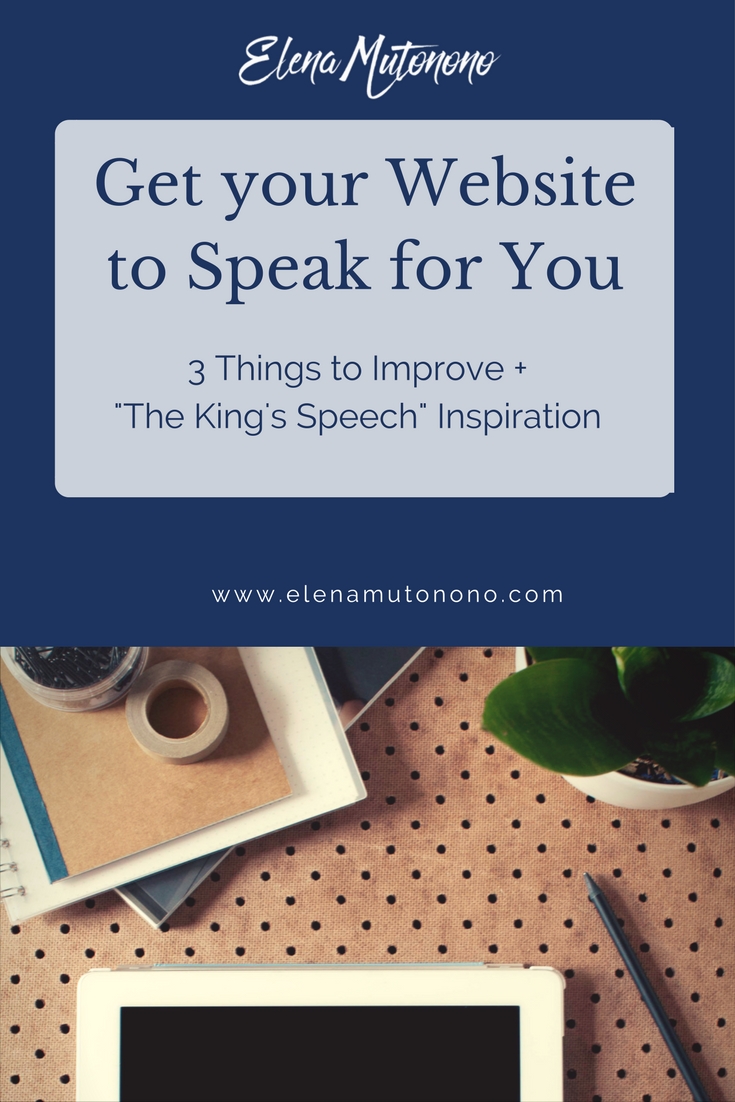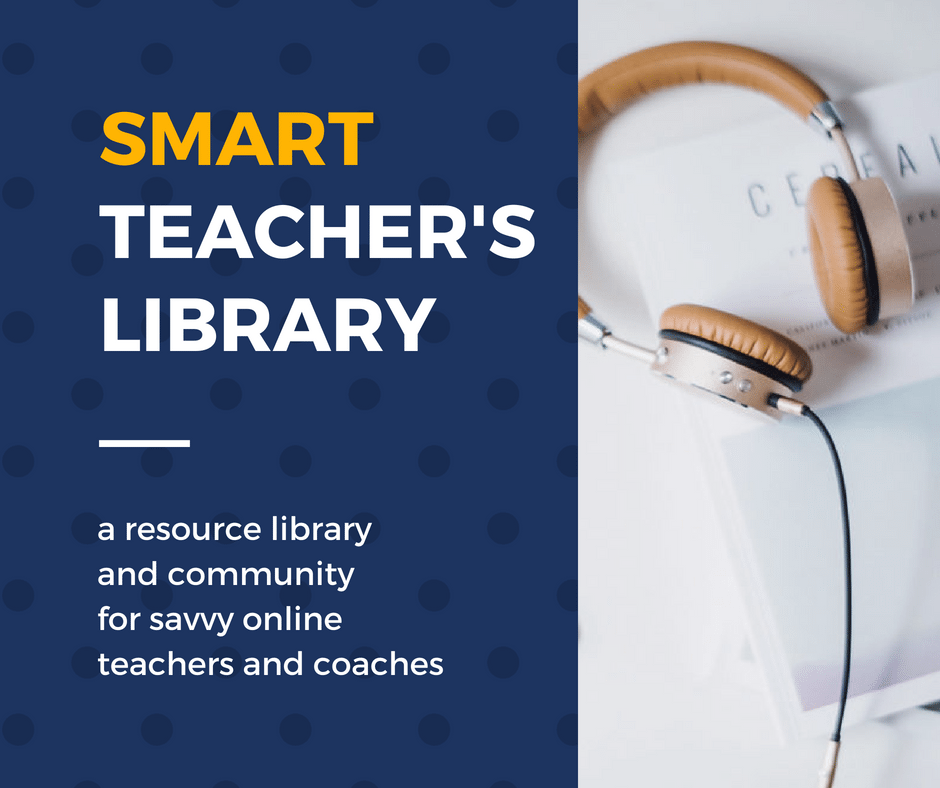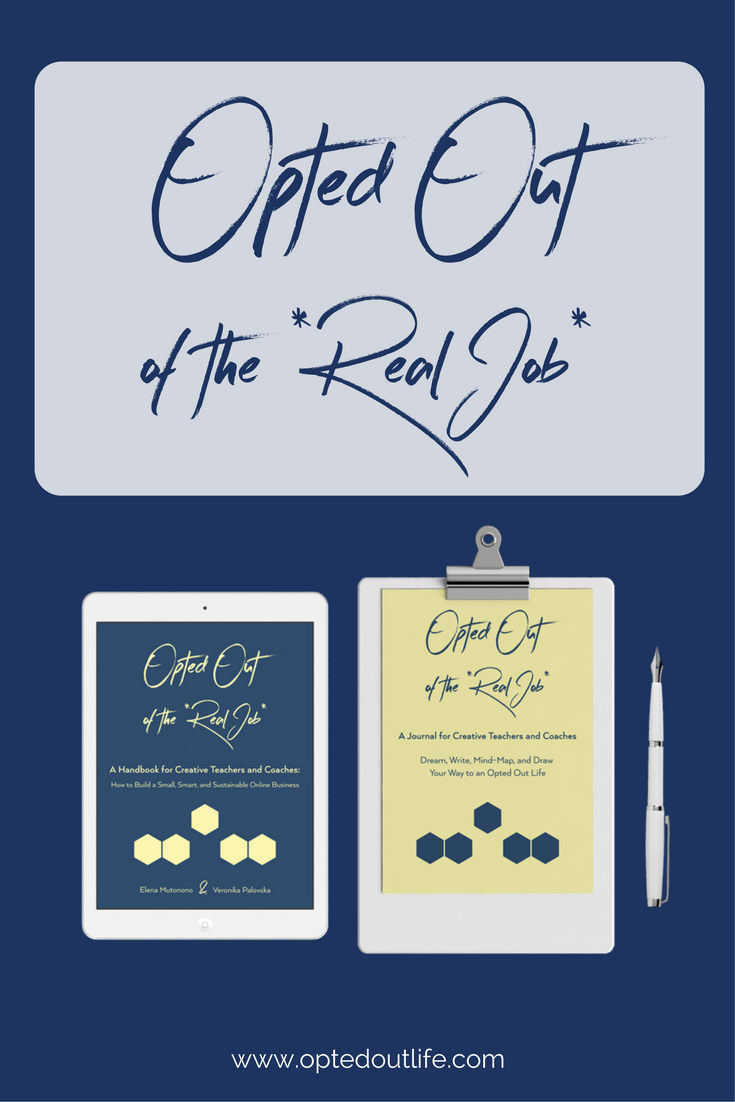Someone asked an interesting question in our Smart Teacher’s Library forum the other day: “What is a connection with your followers on Instagram and how do you know when you have it?”
To help explore this topic today I’ve invited Elfin Waters, who is an online Italian teacher on Instagram. This year she sold out her All About Italian retreat, and all of the participants found her through Instagram. I’ve asked Elfin a few questions about engagement and connection and I hope her answers will help you create relevant and memorable content for your Instagram.
#1: How do you define “connection” on Instagram? What are some tips to build connection with your readers?
Connection is all those things aside from what you teach, that you and your audience both happen to feel passionate about and want to share with each other.
It’s built over time through a careful choice of images that show what you and your values are outside of your business.
Let’s say that you and your tribe are into gardening, cats and baking cakes. Whenever these things come up on Instagram and you feel this connection, both you and your audience will spontaneously want to tag people you know who would appreciate these things either on Stories or on the feed.
This will happen when your audience has stopped seeing you in a one-dimensional way, solely as a teacher.
Maybe you’re not at that stage yet. So, here’s my suggestion. Allow yourself, as an experiment, to spread genuine positive vibes regularly with your audience over a period of time…let’s say 3 months non-stop and see what happens.
At first, you’ll feel really uncomfortable but then you’ll see conversations unfold that will lead to beautiful places AND make you a better person, teacher and business owner. When you interact, be sure not to talk down to anyone. Be a friend.
Let me just stress that nothing about this approach is easy because we think that nobody cares about what we have to say if we’re not teaching.
As a category, we fail to realize that we impact lives also outside our teaching hours. But, creating a connection with your audience will help and inform every aspect of your business.
#2: When is engagement successful? What can teachers do to increase engagement (please give examples)?
Connection and engagement go pretty much hand in hand. The key is to talk about yourself in a way that you’re actually talking about your audience, their life and their struggles.
Whenever you post anything — be it in the feed, or in your stories or IGTV — always see if it’s relatable to your audience. Ask for help on something, ask for advice or simply what is important to them. Sometimes by sharing a struggle and getting suggestions you’re actually helping others simply by having voiced a problem out loud.
For instance, I’m struggling with constant migraines and headaches. I’ve shared images of my medication boxes in Stories and have asked for advice in the question box. By sharing my own, very specific problem, I’ve gotten people to tell their own stories and ideas on solutions. I did it because I’ve reached a point of trust in which this is something I feel comfortable in sharing. But it doesn’t have to be anything that dramatic.
For instance, yesterday I shared my trouble in taking my dog out because it was raining. It took me 5 minutes to share this and I received messages throughout the day. The question boxes and the polls on Stories are powerful but need to be used carefully.
Ask simple questions about inconsequential stuff you think your audience could help you with. People love to be helpful. Show that you enjoy hearing from them. Everything you post has to lead to conversations so try avoiding posting statements.
#3: What is the role of Stories in building connection and engagement on Instagram? How do you do that?
Stories are a wonderful opportunity to show who you actually are, the person behind all the expertise, the certifications and the many languages. This is the place where your audience feels freer to connect because the DM box is less intimidating than leaving a comment that everyone can see to an actual post. There’s no nasty algorithms going on here and you’re finally free to tell your own story.
It doesn’t take much. It can just be tiny snapshots from your day. Your favorite chocolate bar, a song you really like on the radio or how much you liked that milkshake you had with your kids. I suggest picking tiny irrelevant things in your day that can help people feel connected to you. Adapted to the country you live in and the language you teach, of course.
Your audience will not react at first but over time they’ll get used to the pace of your stories and look forward to seeing what you’re up to. They’ll start responding but you have to give them time because this is exactly like a real-life conversation between people — you need to build trust and familiarity.
When you do get messages, make it about them, keep the conversation going, speak like you would with a casual acquaintance you meet on the streets, be the friendly and caring person you are. My Stories are usually long and complicated but that’s because that’s what I enjoy creating. But it’s not at all necessary, you can keep them short. Five shots from your day, three times a week is plenty to build on over time. Find what works for you. After all, this is your story.
#4: Many teachers post quizzes, fill-in-the-blank assignments or word lists on Instagram. Do you think it’s a good idea? Why/why not?
In other fields, making Stories about education can make sense. But in language learning it’s a no-no. Too hard on the viewers. Requires a higher attention span that few people have these days. People watch Stories to relax and be entertained by someone who they feel connected to. That’s what they’re expecting. Putting language quizzes is too demanding on the brain.
I love languages and even I stop watching when I see the quizzes because they make me feel inadequate. I’m too tired and cannot muster the mental energy to do them. But worse of all, the quizzes create an emotional distance that you want to avoid.
Put simply, you’re missing out on an opportunity to connect and bridge gaps when you’re using Stories to educate on language. Not to mention you’re making extra work for yourself.
Building connection and engagement on Instagram doesn't have to be artificial. Learn how to turn your passive readers into raving fans.Click To Tweet
#5: What are some things language teachers should avoid if their goal is to build authentic connection and engagement?
The first thing to avoid is thinking of your Instagram audience as followers. Do yourself a favor and remove that word from your vocabulary altogether. It engenders a divide between you and the people who are interested in what you have to say. It separates instead of connecting.
On Instagram, if you want to make a difference, and you can and will, you have to understand that this is a place for conversations and not lectures. Quit seeing yourself as someone with qualifications who is there to teach things to people.
You’re on Instagram to learn and have conversations so you have to see your audience with respect. No matter how small your tribe is. In fact, the smaller the better — you guys are in this together.
The other thing to avoid is thinking about your teacher persona as separate from your private persona. “They want to know about my life and that’s private” is something I hear many teachers say about their crowd on Instagram. That’s because the posts that receive the most attention will be the most personal ones or the ones with pictures of you.
But your audience isn’t there to pry. It’s there to try to relate to you and wants to find things in common. Small things. That’s why it’s not a good idea to keep another IG account for your own personal interests. It’s your own interests on IG that will help you connect better with your audience.
This is a good thing, not something you should see as a price to pay. Being a multi-faceted person makes you a better teacher, not a worse one. How are you going to make a difference if you’re not showing what makes you unique?
You don’t have to bare your soul or wear your heart on a badge. Share small things that you’d share with an acquaintance in town or someone you’re having a casual chat with on a train in real life.
Would you hesitate in sharing with a stranger how much you like cats? How much you enjoyed that class of pilates? Or that movie you saw, would you recommend it? If it’s something you’re comfortable discussing offline, then you can share it on Instagram as well.
Why is this important? Because in real life, people would buy from you based on your reputation but also on your likeability. How are they going to do that on Instagram? You have to show the lovely, warm person you actually are in order to engender trust.
On Instagram, learn to listen. Spend more time on other IG accounts than on your own posts. Not other teacher accounts. Your community’s accounts. Read the comments to the posts, every day for ten minutes. Over time, by doing that every day, you’ll build up a sense of what makes your audience excited and what moves them. What words and images trigger a response.
Join us!
In January Elfin Waters, Veronika Palovska and moi are launching our brand-new Instagram course + mastermind that will help you start building your community online. The course is designed FOR online language teachers BY online language teachers. It will help you gain traction on Instagram as we learn about building connections, creating engaging stories and posts, and building sales funnels that will allow you to sell your products and services in the future. Learn more and jump on the waiting list.

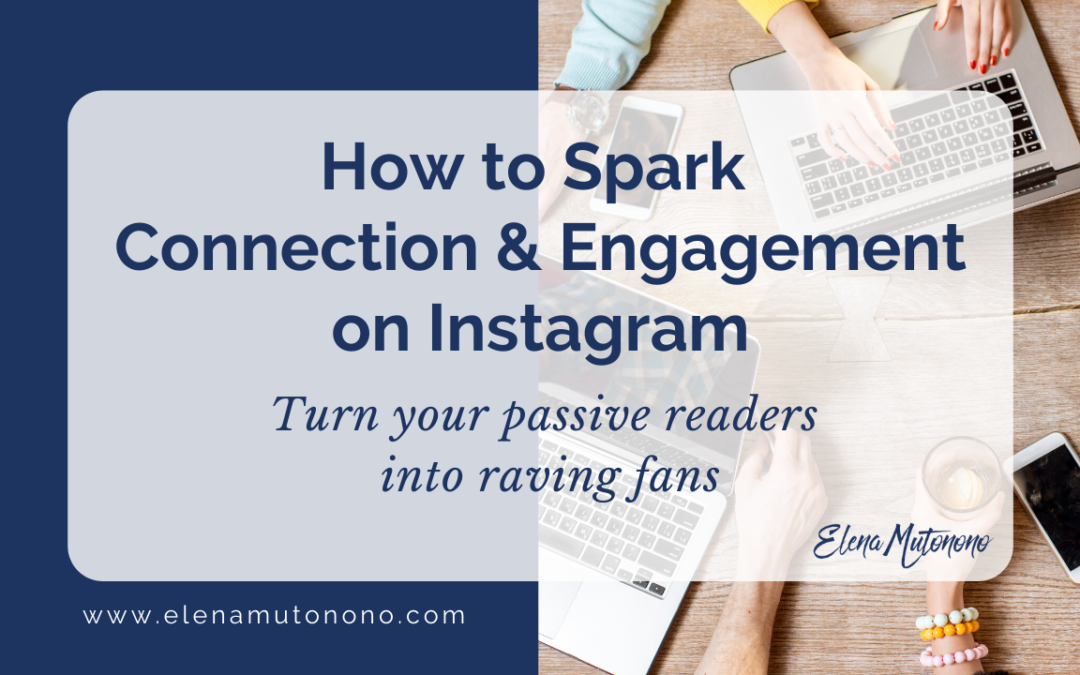
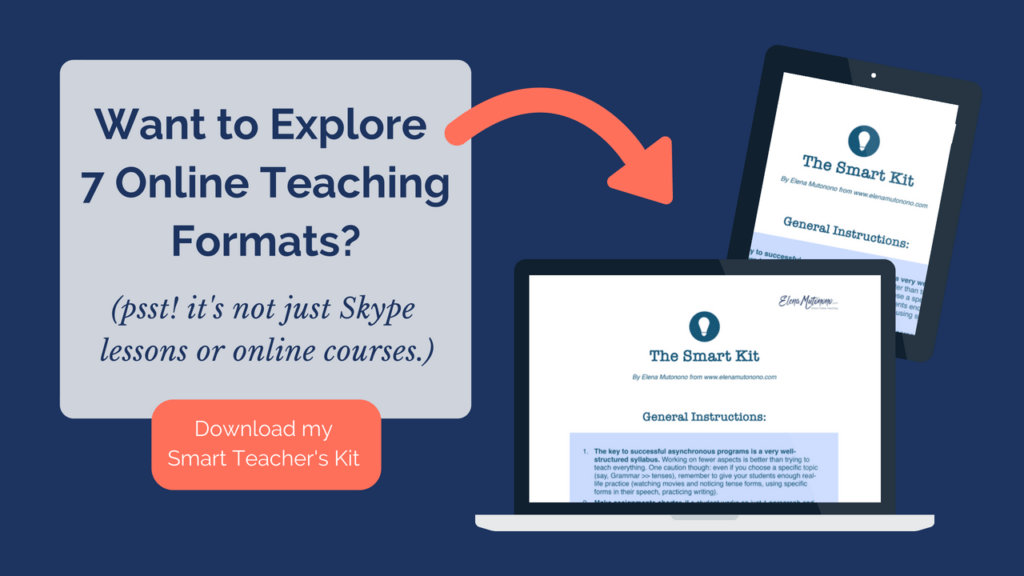
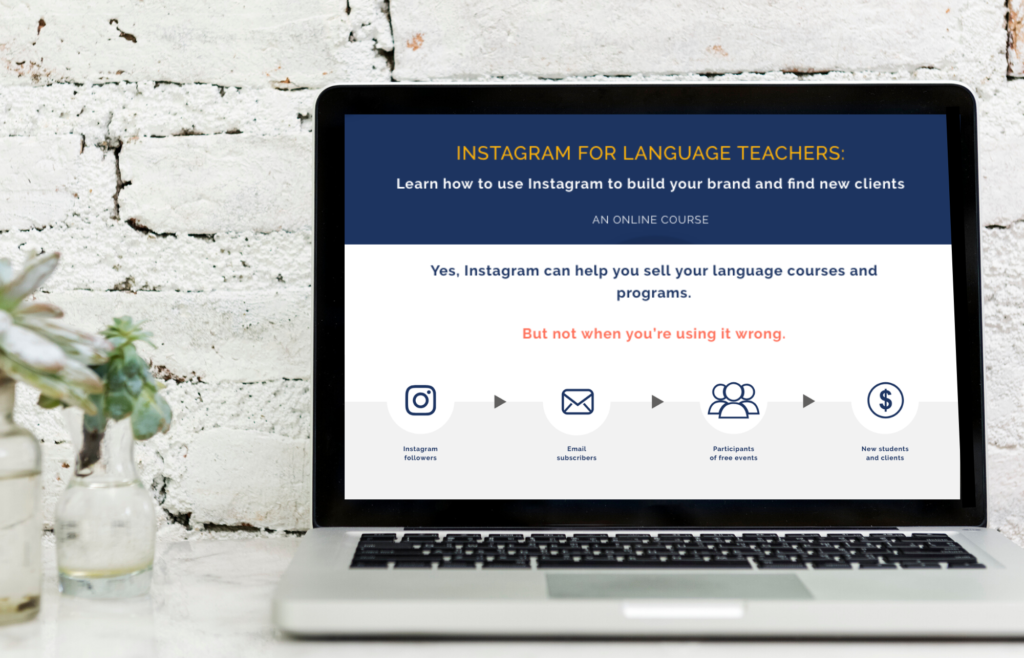
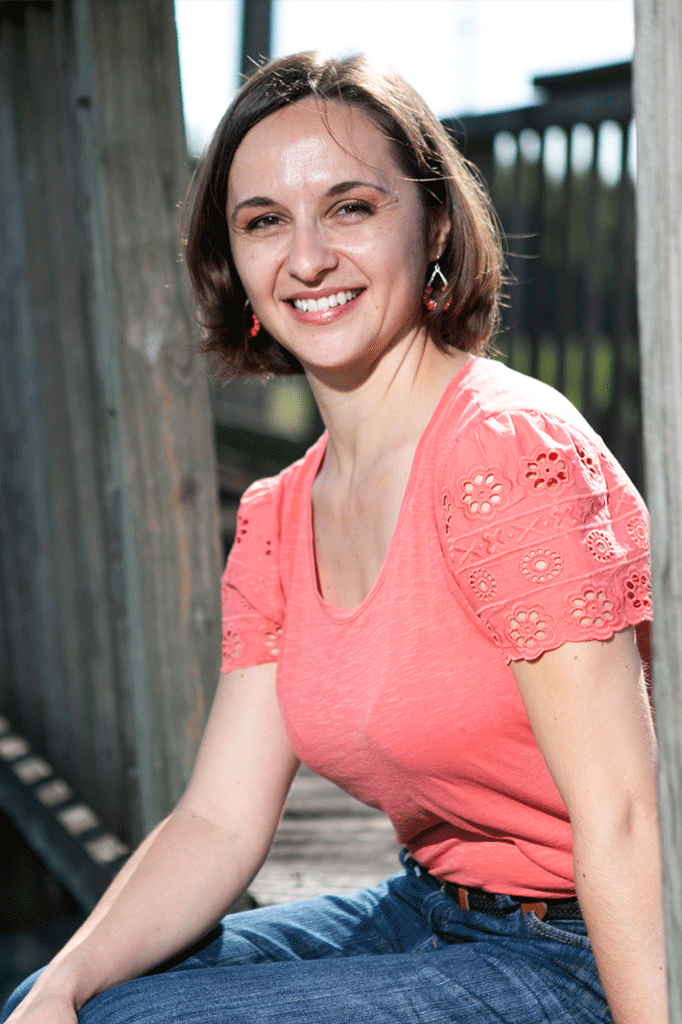 Welcome to my nook where *Big Magic* happens. My name is Elena Mutonono, I help small business owners package their services as digital products and sell them online. I want you to work smarter, not harder. Increase your impact beyond your current face-to-face clients. Grow your business as you reach more people all over the world.
Welcome to my nook where *Big Magic* happens. My name is Elena Mutonono, I help small business owners package their services as digital products and sell them online. I want you to work smarter, not harder. Increase your impact beyond your current face-to-face clients. Grow your business as you reach more people all over the world.
